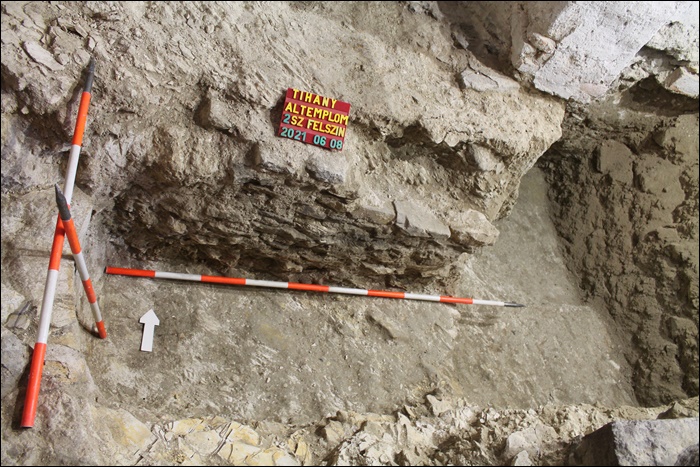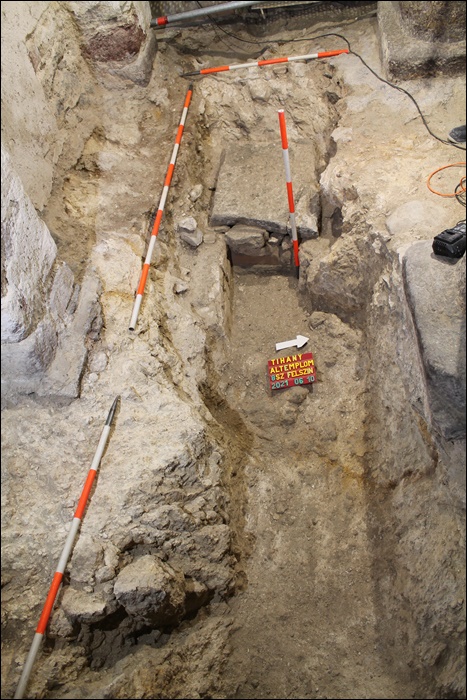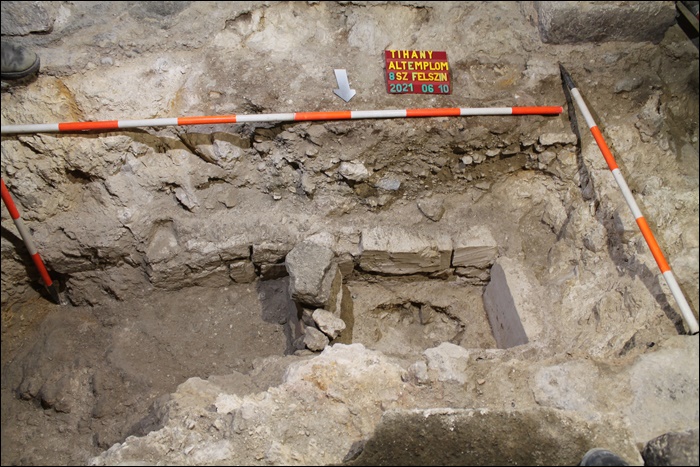 Medieval graves in the crypt
Medieval graves in the crypt
Az ásatás során közel húsz sírgödör lett feltárva, azonban valószínűleg ennél is több ember nyugodott itt az évszázadok során. Eredetileg azonban mindössze három személy örök nyughelyének szánták az altemplomot. Elsőként az alapító királyt, I. Andrást (1046–-1060) temették el. Övé volt a fő sírhely, a középső hajóban a keletről számított második és harmadik pillérpár között. Sírja biztosan díszes volt, és kiemelkedett a környezetéből, erről árulkodnak a pillérek lábazatai is, amelyeknek sír felé eső részét lefaragták. 1090 körül Dávid herceget, I. András fiát is itt temették el, az övé lehetett a déli mellékhajóban, a királyi sírral egyvonalban lévő falazott sír, és ezt fedhette a ma is ismert márvány sírkő. A harmadik, az északi mellékhajóban lévő sírba eltemetett személy kiléte kérdéses, de a legvalószínűbb, hogy I. András feleségét, a kijevi Anasztázia hercegnőt temették ide.



Medieval graves in the crypt
The excavation has uncovered around twenty graves, but it is likely that even more people have been buried here over the centuries. Originally, however, the crypt was only intended to be the final resting place of three people. The first to be buried was the founding king, Andrew I (1046–1060). He had the main burial place, in the central nave between the second and third pair of pillars from the east. His tomb must have been ornate and stood out from its surroundings, as the plinths of the pillars, whose part facing the tomb has been cut away, testify. Around 1090, Prince David, son of Andrew I, was buried here, and he may have been buried in the masonry tomb in the south aisle, in line with the royal tomb, and it may have been covered by the marble tombstone that we know today. There is still some debate about the identity of the third person buried in the tomb in the north aisle, but it is most likely that the wife of Andrew I, Princess Anastasia of Kiev, was buried here.